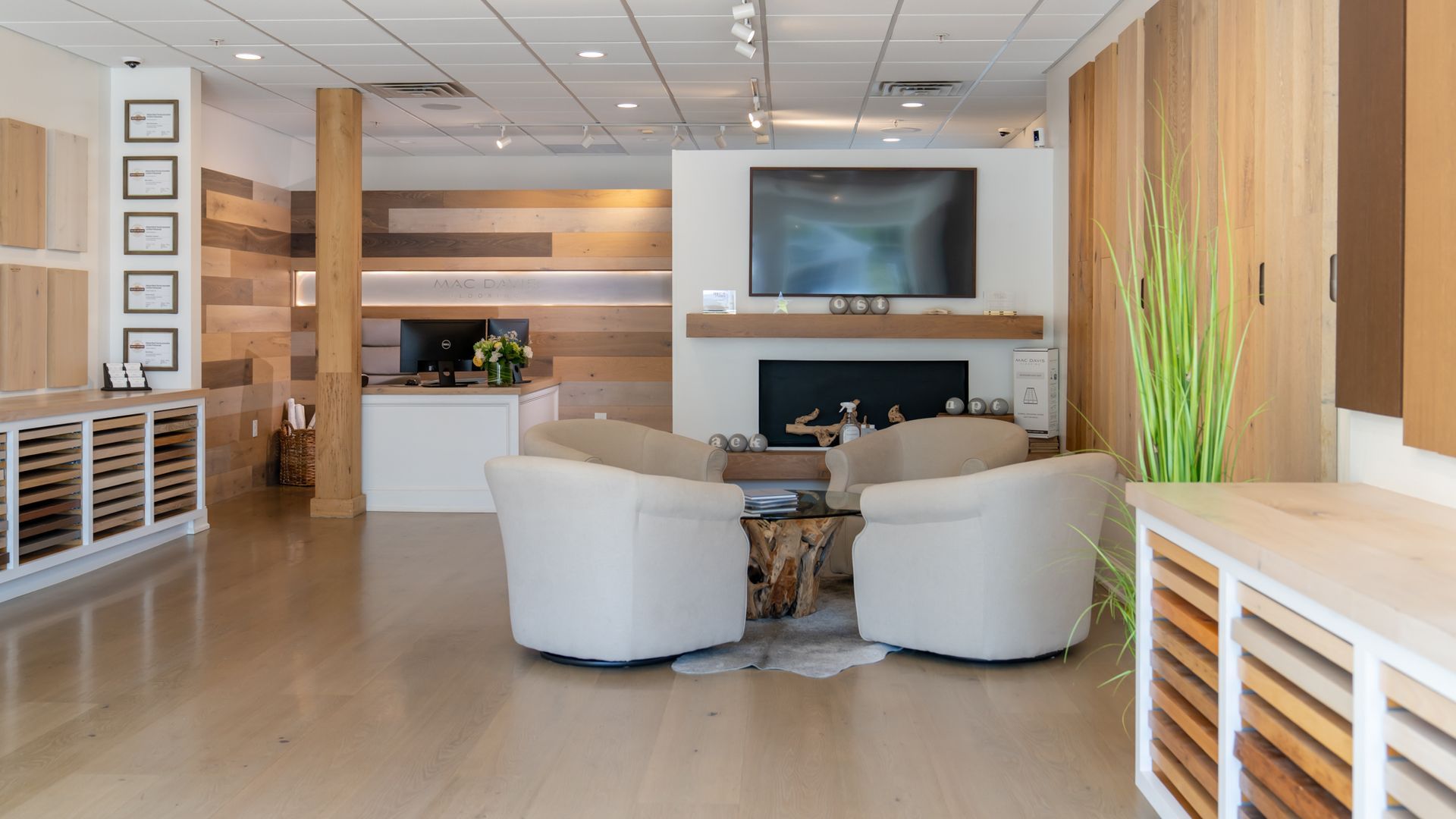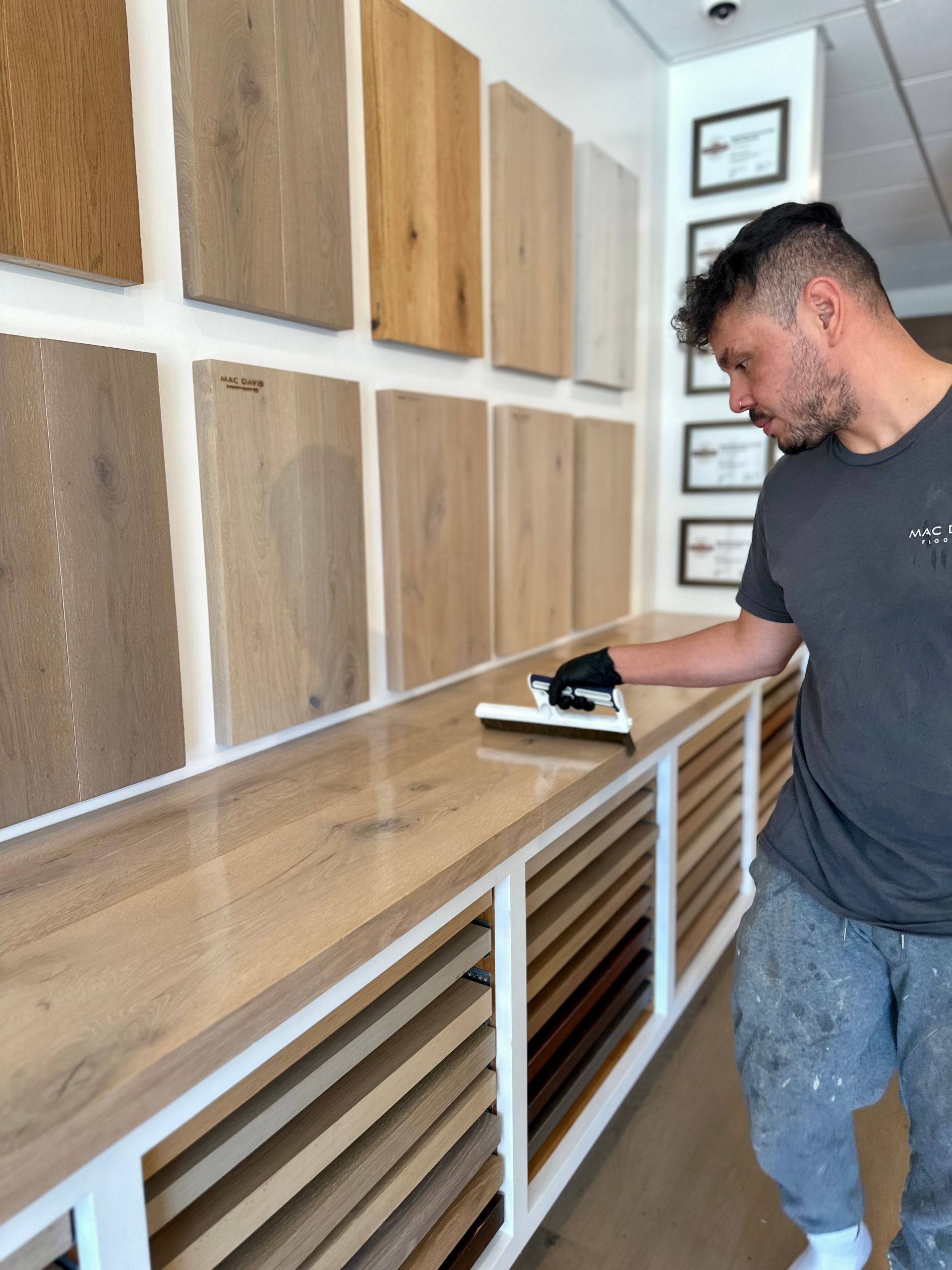Understanding Screen and Coat for Hardwood Floors
Hardwood floors are durable and long-lasting, and their surface evolves gracefully, giving homes and businesses a sense of authenticity. However, even the best floors gradually lose their shine due to daily wear. Many homeowners think a full sanding and refinishing is the only solution, but that’s not always the case. A process called screen and coat can often restore the look and protection of hardwood floors without the time, cost, or intensity of a complete refinish.
What Does “Screen and Coat” Mean?
A screen and coat is a maintenance procedure for hardwood floors that focuses on the top protective finish. Here’s how it works:
- Screening- The floor’s existing top coat is lightly sanded with a fine-grit sanding screen to prepare the surface for a new finish. This step doesn’t remove wood or alter the stain; it simply prepares the surface for better adhesion.
- Coating- A fresh layer is then applied, restoring shine, strengthening protection, and extending the life of the hardwood floors.
When Is Screen and Coat the Right Option?
After a busy Cape Cod and Islands summer- with sand, humidity, and heavy foot traffic- hardwood floors can begin to look dull or show light surface scratches. A Screen and Coat is an excellent way to restore their natural luster without the need for a full refinishing.
It’s also a practical option for properties being prepared for sale or rental, offering a quick refresh that adds noticeable value. However, it’s important to note that floors maintained with wax or oil-based cleaning products are not good candidates for this service. These products penetrate the wood and prevent the new finish from properly adhering to the surface.
Advantages of Screen and Coat
A screen and coat offers several key benefits. The process is efficient, usually completed in a single day with far less dust and disruption than sanding. It’s also more affordable, since less labor and material are required compared to a full refinishing. Just as important, the added protective layer helps guard the wood beneath and extends the time between full sanding cycles, allowing hardwood floors to last longer while maintaining their natural beauty.

How Often Should It Be Done?
Most hardwood floors benefit from a screen and coat every 3–5 years, depending on how much traffic the space receives. For high-use areas, such as kitchens, hallways, or commercial spaces, maintenance may be needed more often. Consistent care helps prevent the need for frequent, more invasive refinishing.
Final Thoughts on Screen and Coat
Understanding the difference between a screen and coat and a full sanding helps homeowners choose the right maintenance approach. While sanding is sometimes necessary, a screen and coat is often the simpler option- saving time and money, reducing wear on the wood, and keeping floors looking their best with minimal downtime. At Mac Davis Flooring, we recommend this method as part of a long-term care plan, since it offers an effective, low-impact way to restore shine, add protection, and preserve the natural beauty of hardwood floors for years to come.





